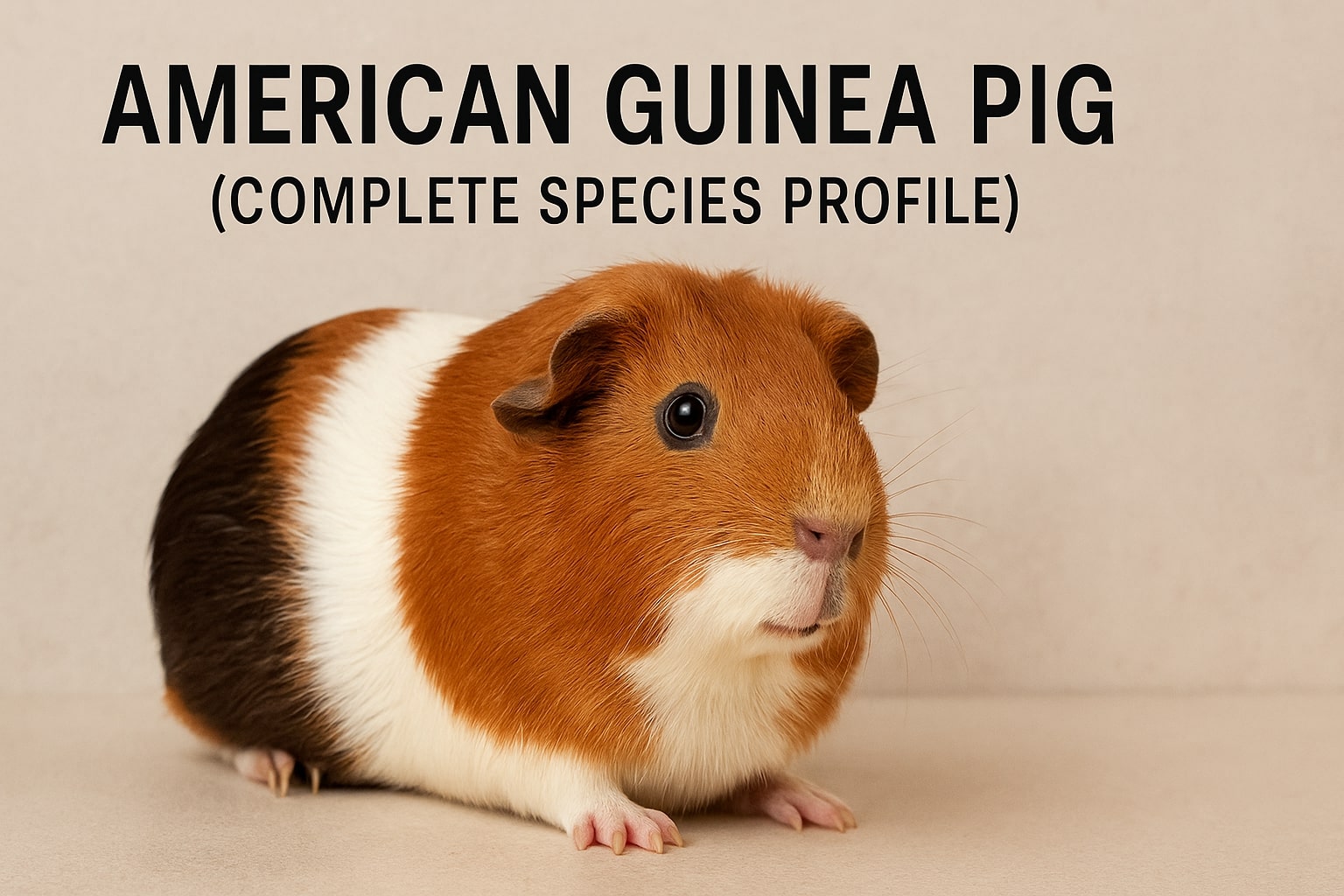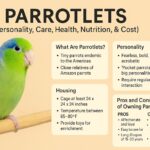The American guinea pig stands as the most popular and widely recognized breed among guinea pig enthusiasts worldwide. This charming small mammal has captured the hearts of pet owners for centuries, offering an ideal combination of manageable care requirements, gentle temperament, and endearing personality traits that make them perfect companions for families and individuals alike.
Understanding the American Guinea Pig Breed
The American guinea pig represents the quintessential guinea pig experience, embodying all the classic characteristics that have made these animals beloved household pets. They have short, straight, dense fur that sits close to their bodies, creating a sleek and manageable coat that distinguishes them from their long-haired relatives.
Unlike other guinea pig breeds, American guinea pigs don’t have whorls or bangs, curls or long fur on their cheeks, which makes grooming particularly easy and fast.
This simplicity in coat structure has earned American guinea pigs the nickname “beginner guinea pigs,” and quite rightly so. Their straightforward care requirements make them an excellent choice for first-time guinea pig owners who want to experience the joy of keeping these delightful creatures without the added complexity of specialized grooming routines.
The breed comes in an impressive variety of colors, ranging from tortoiseshell to black, white, cream, beige, chocolate, and lilac to brindle, roan, agouti, and Himalayan. This diverse color palette ensures that potential owners can find an American guinea pig that appeals to their aesthetic preferences while still enjoying the breed’s characteristic ease of care.
Physical Characteristics and Appearance
American guinea pigs possess a distinctive physical profile that sets them apart from other guinea pig varieties. Their fur is notably short, typically measuring up to 1.1 inches (3 cm) in length, and maintains a straight, close, thick texture. This coat lies flat against their body, creating a smooth appearance that requires minimal maintenance compared to breeds with longer or more complex fur patterns.
The absence of rosettes further contributes to their streamlined appearance. Rosettes are circular patterns of fur that grow in different directions, creating swirls and whorls that can complicate grooming routines. American guinea pigs lack these features entirely, resulting in a uniform coat that grows in a single direction and remains manageable throughout their lifetime.
Their compact, rounded body shape reflects the general guinea pig anatomy, but American guinea pigs tend to maintain a particularly neat and tidy appearance due to their coat characteristics.
Adult American guinea pigs typically weigh between 1.5 to 2.5 pounds, with females generally being slightly smaller than males. Their lifespan ranges from 4-6 years, providing families with several years of companionship and joy.
Essential Care Requirements
Proper housing forms the foundation of good guinea pig care, regardless of breed. Guinea pigs need a living area that is at least 65 cm by 65 cm per guinea pig, with walls about 30 cm high. They don’t climb or jump very well, so the enclosure can be open on top, unless you also happen to have a cat or a dog at home. The cage can be made out of metal or plastic, but the bottom should be flat and solid, not mesh or wire, which can hurt their feet3.
The cage floor should be covered with appropriate bedding materials such as aspen wood shavings, carefresh (bedding made from recycled paper) or a thick, clean blanket. Cedar or pine shavings should be avoided because they can cause health problems. The cage should be positioned in an area protected from cold drafts and direct sunlight to maintain optimal comfort levels.
Daily maintenance involves scooping soiled shavings and providing fresh food and water. The entire cage requires thorough cleaning at least once a week. A clean, dry cage environment helps keep guinea pigs healthy and prevents the development of respiratory or skin conditions that can arise from poor hygiene.
Nutritional Needs and Feeding Guidelines
Guinea pigs are herbivores, meaning they only eat plants. In the wild, guinea pigs continuously graze day and night on coarse vegetation such as rough grass, leaves and herbs4. This natural feeding behavior informs the dietary requirements for domestic guinea pigs, which need a very high fiber diet to keep their guts moving and their continuously growing teeth at a healthy length.
The foundation of any guinea pig’s diet should be unlimited hay and grass, which should make up 85-90% of their total food intake. Timothy hay is an excellent option, and fresh grass can either be eaten straight from the lawn or picked for them if they don’t have access to the outdoors. Unlike pellets, hay cannot be overfed, so guinea pigs should have constant access to fresh, high-quality hay.
Guinea pig pellets should be provided in small quantities, approximately one tablespoon per guinea pig per day. These pellets should be specifically formulated for guinea pigs because they contain added vitamin C, which is crucial for guinea pig health since they cannot produce this essential vitamin themselves.
Fresh vegetables and fruits high in vitamin C should be offered daily in amounts of about one cup per guinea pig. Excellent choices include peppers, parsley, spinach, kale and papayas. This variety ensures adequate vitamin C intake while providing mental stimulation through different tastes and textures.
Fresh water must be available at all times through a sipper bottle. The water should be changed daily, and the bottle should be cleaned with soap and water once a week to prevent bacterial growth and maintain hygiene.
Health Considerations and Common Issues
Like all guinea pigs, American guinea pigs are susceptible to certain health problems that owners should be aware of and monitor for regularly. Guinea pigs can be hardy and easy to care for when provided an appropriate environment for their unique needs, but they are susceptible to certain problems and diseases.
Respiratory infections, particularly pneumonia, represent one of the most significant health concerns for pet guinea pigs. These infections can be caused by several bacteria, including Bordetella, Staphylococcus, and Streptococcus. Guinea pigs can naturally harbor these bacteria and may be asymptomatic carriers, but stress factors such as overcrowding, pregnancy, and the presence of other illness increase the chance that infection will develop.
Vitamin C deficiency, known as scurvy, poses another serious health risk. Since guinea pigs cannot produce their own vitamin C, they must obtain it from their diet. Signs of vitamin C deficiency can include dental problems, poor wound healing, and general weakness. This condition is entirely preventable through proper nutrition that includes vitamin C-rich foods and appropriate guinea pig pellets.
Inner ear infections are particularly common in guinea pigs and often present as a head tilt, though they may also show up as weight loss and poor eating habits. Treatment usually involves several weeks of antibiotic and anti-inflammatory therapy, and in severe cases, specialized surgery may be required.
Guinea pigs are also prone to gastrointestinal diseases, urinary problems, fungal skin infections, and infestations by lice and mites. Regular health monitoring and prompt veterinary attention when problems arise can help prevent minor issues from becoming serious health threats.
Grooming and Maintenance Benefits
One of the primary advantages of choosing an American guinea pig lies in their minimal grooming requirements. Their straight hair hardly needs any additional grooming as these guinea pigs can generally manage to keep their fur clean well themselves. Owners need only comb or brush their fur as needed, making the maintenance routine simple and stress-free for both pet and owner.
Another significant benefit of short-haired guinea pigs is that their fur doesn’t knot nearly as much as long-haired coats. This characteristic eliminates the daily brushing requirements that other breeds may demand and reduces the risk of matting that can lead to skin irritation or infection.
The short coat also provides practical health monitoring advantages. Even a beginner can easily see when an American guinea pig isn’t doing well, as their short coats allow for easy observation of the skin and early detection of potential health issues. Inflammation and other skin conditions are not hidden by long fur, enabling prompt identification and treatment of problems.
Nail trimming should be performed every four to six weeks by an adult, as this task can be tricky and requires experience to avoid cutting the nails too short, which can cause bleeding and pain.
While American guinea pigs do groom themselves effectively, occasional baths may be necessary if they become particularly smelly or greasy. These baths should use warm water and mild pet shampoo, with care taken to keep the face dry and thoroughly rinse out all shampoo residue.
Social Needs and Behavioral Characteristics
Guinea pigs are inherently social animals that require companionship to thrive emotionally and psychologically. They are alert, curious, sociable, happy and active animals that should never be kept alone as they would suffer terribly from loneliness. Human company, while valuable, cannot serve as a replacement for guinea pig companionship.
The social nature of guinea pigs reflects their wild origins, where they lived in small groups with one boar (male) and several sows (females) along with any pups (babies). This natural social structure continues to influence domestic guinea pig behavior, making it essential for owners to provide appropriate companionship.
Sometimes well-meaning owners attempt to house guinea pigs with rabbits, but this arrangement is not recommended. These animals have completely different communication patterns and behaviors, making such pairings potentially stressful for both species.
The analogy provided in the search results suggests that expecting a guinea pig to be content with a rabbit companion would be like expecting a person to be satisfied living in a cage with a monkey.
Guinea pigs require regular exercise and will happily romp around a room that has been cleared of hazards such as electrical cords, cats or dogs, and poisonous plants.
They love to run along walls and hide under furniture, exhibiting natural behaviors that provide both physical exercise and mental stimulation. Daily time outside their habitat in a safe, enclosed area is essential for their well-being.
Historical Context and Cultural Significance
Understanding the history of guinea pigs provides valuable context for appreciating these remarkable animals. Guinea pigs originate from South America in the Andean region, known today as Colombia, Ecuador, Peru, and Bolivia.
Despite their name, guinea pigs are not native to Guinea, nor are they closely related to pigs. Instead, they originated in the Andes region of South America, where wild guinea pigs can still be found today.
Studies based on biochemistry and DNA hybridization suggest they are domesticated animals that do not exist naturally in the wild, but are descendants of a closely related cavy species such as C. tschudii. It is believed that guinea pigs were first domesticated as long ago as 5000 BC and were initially kept as a food source. This practice continues today, as guinea pigs remain an important culinary staple in the Andes Mountains, where they are known as cuy.
The cultural significance of guinea pigs extends beyond their role as food sources. The Moche civilization actually worshipped them and often included them in their artwork, with fine examples including statues of guinea pigs dating back as far as 500BC.
Guinea pigs were also used in healing rituals for their believed ability to collect evil spirits, a practice that continues in some areas where Western medicine has not become readily available.
In Western society, the guinea pig has enjoyed widespread popularity as a pet since its introduction to Europe and North America by European traders in the 16th century. Their docile nature, friendly responsiveness to handling and feeding, and the relative ease of caring for them have continued to make guinea pigs a popular choice of household pets.
Making the Right Choice for Your Family
For families considering their first guinea pig, the American breed offers an ideal starting point. The combination of manageable grooming requirements, clear health indicators, and gentle temperament makes them suitable for children and adults who are new to guinea pig ownership.
Their straightforward care needs allow owners to focus on building relationships with their pets rather than struggling with complex maintenance routines.
Potential owners should consider adopting from animal shelters, where guinea pigs often wait for new homes alongside cats and dogs. These rescue animals can make excellent pets while providing the additional satisfaction of giving a home to an animal in need.
The American guinea pig represents more than just a pet choice; it offers an opportunity to experience the unique joy that comes from caring for these remarkable creatures. Their gentle nature, engaging personalities, and relatively simple care requirements make them ideal companions for anyone seeking the rewards of pet ownership without overwhelming complexity.
With proper care, attention to their social needs, and commitment to their wellbeing, American guinea pigs can provide years of companionship and happiness for families willing to welcome them into their homes.
- 9 Types of Lovebirds (A Comprehensive Guide for Pet Bird Owners) - June 20, 2025
- Labrador Retriever: America’s Most Beloved Family Dog - June 9, 2025
- The Complete Guide to Indian Ringneck Parrots - June 9, 2025















